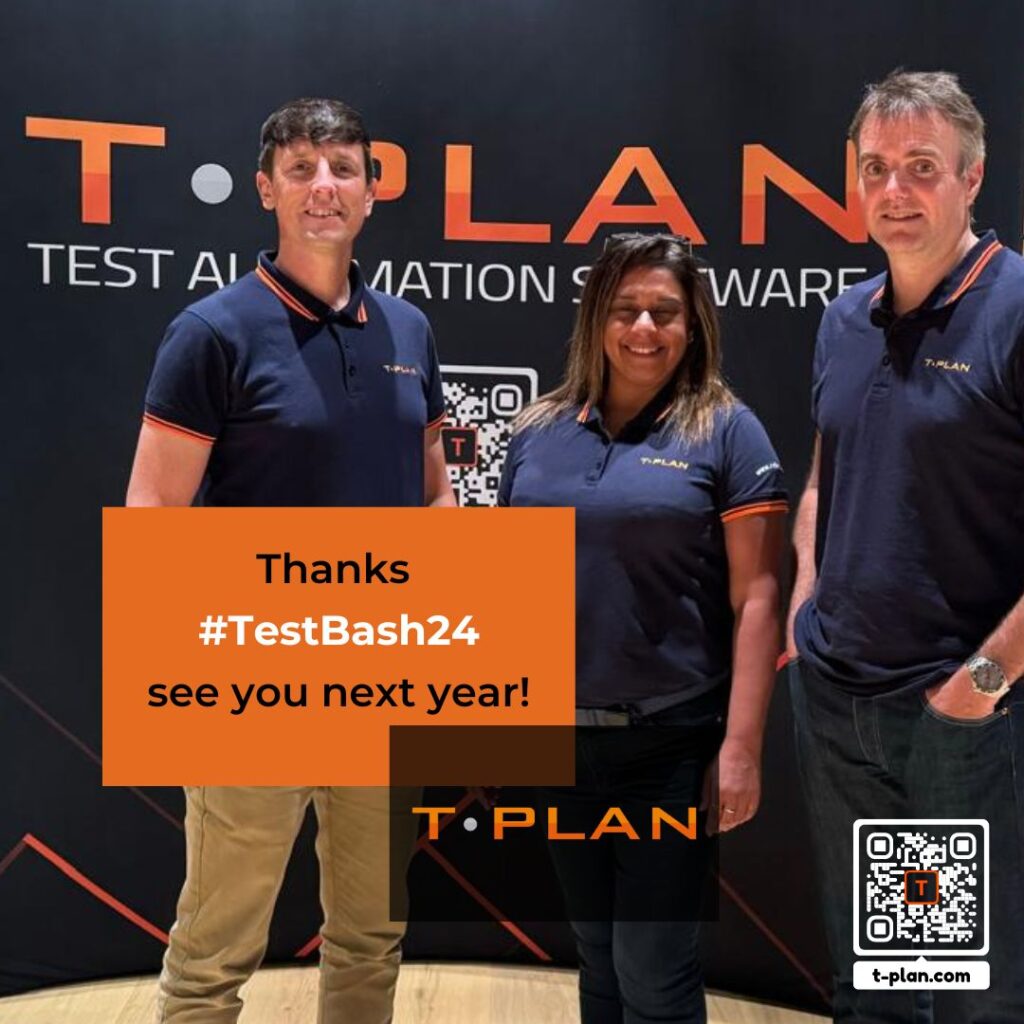The T-Plan team headed to TestBash 2024 to find out what the testers and influencers from around the world were discussing. We weren’t unsurprised that there was a lot of talk around AI in software testing, with conversations focusing on both the transformative potential of AI tools and the nervousness they have sparked within the testing community.
It’s true to say that while AI offers unprecedented opportunities for automating processes, enhancing accuracy, and predicting issues, many testers felt unsure how to fully trust and validate the results. The desire and expectation to use AI isn’t quite aligned with the solutions are currently on offer—leading to unclear answers to some of the delegates questions.
Here are some of our thoughts…
1. AI’s Growing Importance in Testing
AI-driven testing tools are reshaping how testers approach software quality assurance. From automating repetitive tasks to leveraging data for predictive insights, AI has the ability to revolutionise the industry. Testers at TestBash 2024 acknowledged that AI could dramatically reduce energy and effort on tasks such as regression testing, performance monitoring, and defect prediction.
AI’s ability to analyse vast amounts of data helps pinpoint issues that human testers might overlook. However, this comes with the tradeoff that testers often find themselves in unfamiliar territory, struggling to interpret or verify AI-generated results. While many testers are eager to embrace AI, they expressed a clear need for tools that provide transparency and accountability in their outputs.
2. Verifying AI Results: A Major Challenge
A recurring concern at TestBash was the difficulty testers face when it comes to validating and trusting AI-driven systems. Many are left asking:
How do I ensure the AI is correct?
AI algorithms, while powerful, often operate as “black boxes” where testers have limited visibility into how decisions are made. Without a clear understanding of these processes, testers are hesitant to fully embrace AI solutions for mission-critical applications, fearing that unchecked reliance could lead to costly mistakes.
To bridge this gap, testers need AI solutions that allow for more human oversight, giving them the ability to probe and verify results. Without this transparency, the risk of errors or over-reliance on AI will continue to be a source of concern.
3. Nervousness Around AI in Closed Environments
One of the most significant concerns highlighted at the event was the use of AI in closed or restricted networks. In these environments, the control over the AI’s behavior is limited, raising fears about how AI will behave without full transparency and oversight. Testers operating in such environments need tools that ensure accurate results while maintaining complete control over the process—something current AI tools struggle to offer in a closed system.
In response to this challenge, T-Plan‘s AI-like solution provides a way forward. Our software doesn’t require any coding so works perfectly in closed networks, allowing testers to automate processes without sacrificing control over the outcomes. With T-Plan, testers can monitor and manipulate the automation process, ensuring transparency and accountability at every step, making it an ideal solution for industries like finance or healthcare where data protection is paramount.
4. Human-AI Collaboration is the Future
Another key takeaway from TestBash 2024 was the realisation that AI is not a replacement for human expertise, but rather a tool that should augment and enhance it. The most successful AI implementations are those that combine the predictive power of AI with the oversight and insight of skilled human testers.
T-Plan’s AI-like testing tool embodies this collaborative approach. While it automates repetitive tasks, it keeps testers in the loop by offering full control and the ability to intervene at critical moments. This ensures that AI-driven testing maintains the quality and thoroughness that human testers bring, while also speeding up and improving the testing process overall.
Conclusion
The discussions at TestBash 2024 highlighted both the excitement and concerns surrounding AI’s role in software testing. Testers recognised the transformative potential of AI but remain cautious due to the lack of understanding in verifying AI outputs and the inherent risks in closed environments. However, solutions like T-Plan’s AI-like automation software offer a way to overcome these challenges, providing transparency, control, and confidence in AI-driven testing.
As AI continues to play a growing role in software testing, tools that allow for collaboration between humans and AI—while maintaining transparency—will be key to navigating the industry’s future. By bridging this gap, testers can confidently embrace AI to enhance their testing processes without losing sight of quality and accountability.



